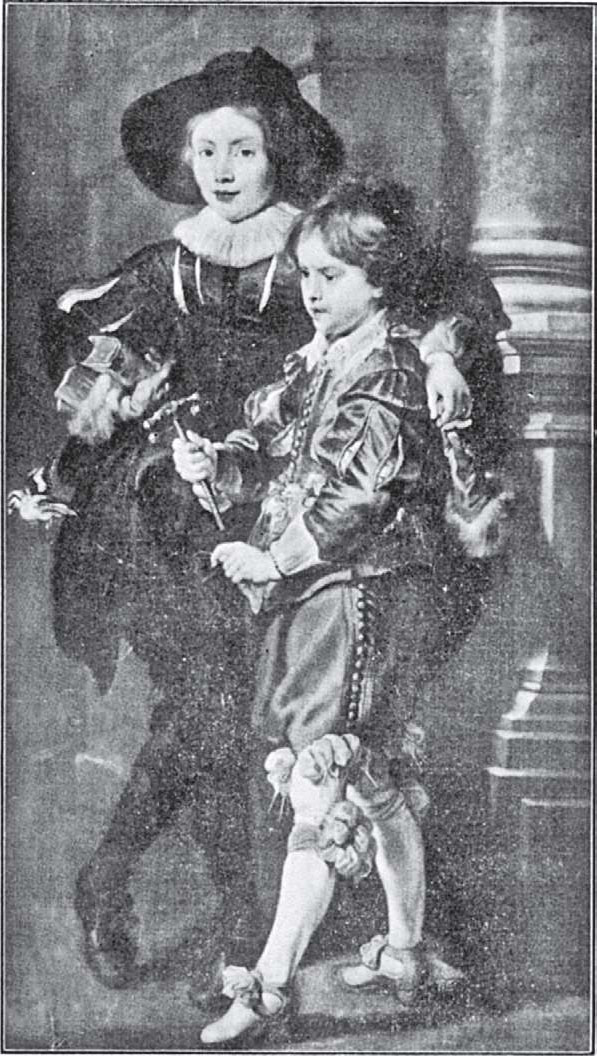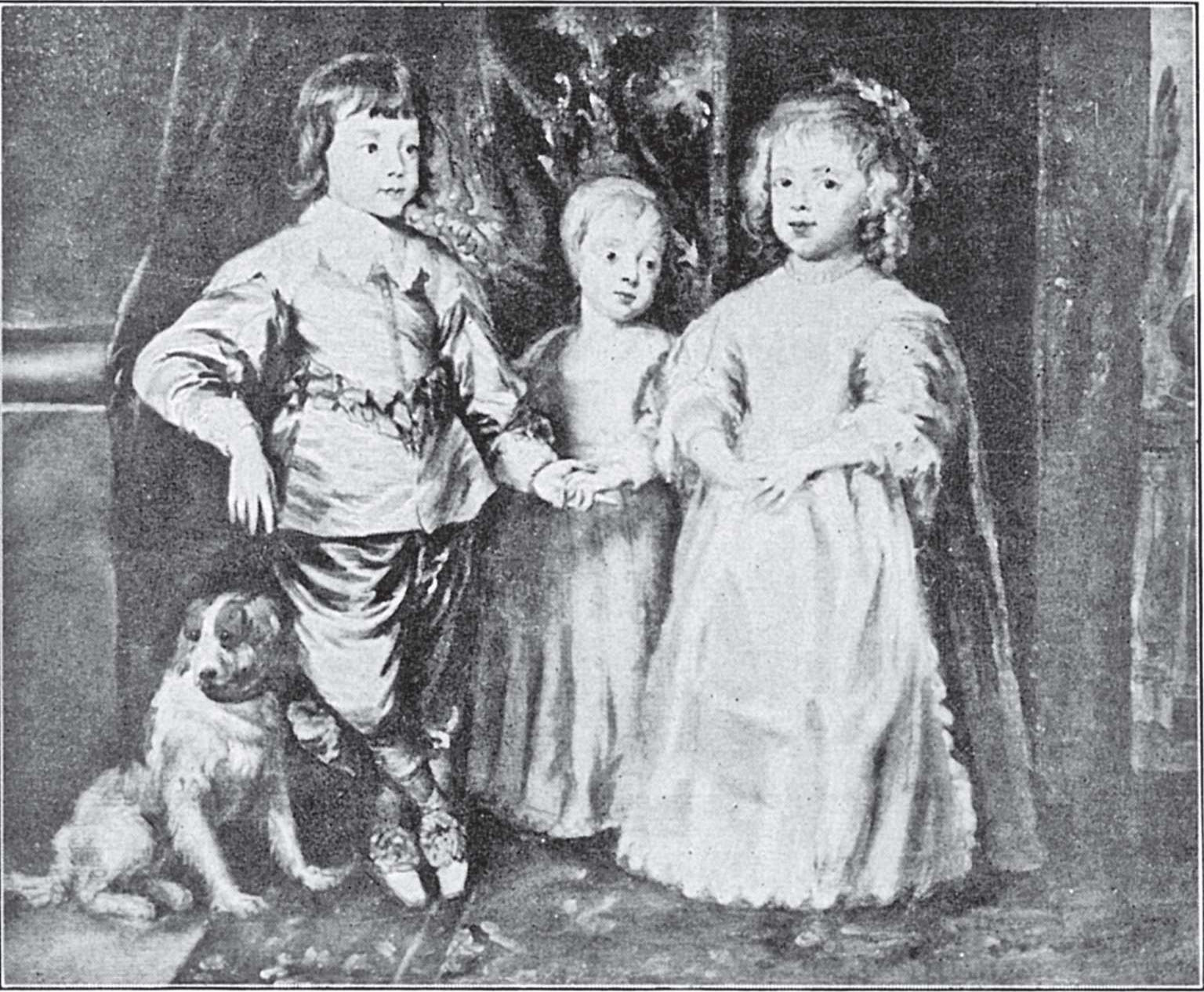





D O you know what a Fleming is? It isn’t some strange animal you can see in the zoo. In fact, a Fleming isn’t any stranger than you are, yourself, for a Fleming is a Flemish person — a person of Flanders. The strange thing about a Fleming is that he is also bound to be either a Frenchman or a Belgian or a Dutchman, as well as just a Fleming, for Flanders is now partly in France, partly in Belgium, and partly in Holland.
An interesting thing about the Flemings is that they had great artists who were painting at the same time as the early Renaissance, or Born Again, artists in Italy. There weren’t quite so many great artists in Flanders as in Italy at that time,but there were many more there than in any other country.If you want to look up this country of Flanders on the map,look for Belgium. You will find it along the North Sea.
The first of the famous Flemish artists were two brothers named Van Eyck. Hubert was the older brother and Jan the younger. They worked in the city of Bruges, which is not a very important city now but then was one of the largest and richest cities in Europe. For a church in Ghent these two brothers painted a magnificent altar-piece. An altar-piece was not like an ordinary picture. An altar-piece had a central panel with wings or shutters on each side, like a threefold screen. These shutters could be closed like the shutters of a window and so the Van Eycks painted pictures on the back as well as on the front.
Hubert was the one who planned the paintings on this altar-piece, but before he had finished them all he died, and then Jan completed the work. The altar-piece was so much admired that several cities wanted it for their museums. So it was taken apart and for a long time the central part was in one city and each of the shutters in another. After World War I the pieces were brought back to Ghent, to make a complete altar-piece again.
The altar-piece is almost all we have to show us how good an artist Hubert Van Eyck was, but Jan’s paintings have been better preserved and there are several very famous ones in museums. Both the Van Eycks painted with oil, and they used oil so well to bring out the colors and to keep the paintings fresh-looking that the story soon grew up that they were the inventors of oil paintings. This isn’t exactly true, but they did improve oil painting so much that we can call them the fathers of oil painting. From them the Italians learned to paint with oil.
The Van Eyck brothers were followed by other good painters in Flanders, but I’m going to have to skip them and tell you about the greatest Flemish artist, who lived two hundred years later than the Van Eycks. So that you’ll know the time this was, I’ll tell you that he lived from 1577 to 1640.His name was Peter Paul Rubens.
Peter Paul must have been a very bright boy, for he learned to speak Latin, French, Italian, Spanish, English, German, and Dutch! Do you know anybody who can speak seven languages?
As a young man Peter Paul worked for several years in Italy, for one of the dukes there. The duke liked his work so much that he would not give Rubens permission to leave.One day, however, Rubens had a message from Flanders telling him his mother was very ill. He started for home at once without waiting to get the duke’s permission.
The rulers of Flanders were glad Rubens had come back and they not only gave him orders for pictures but made good use of him in other ways. He was entrusted with important missions to carry out in Spain, in France, and in England. Every place he went he won friends. The King of Spain made him a knight. The King of England made him a knight. Honors were heaped upon him. He continued to paint hundreds of pictures. In his house was a huge studio,where he had many young artists helping him as they themselves learned from him.He liked to paint big pictures best and the stairway of his studio was made very large so that his largest paintings could be taken from the studio after they were painted.

NO.16-1

Rubens is noted for the rich, bright colors of his paintings. He could paint all kinds of pictures — portraits and landscapes, animals and battles, religious pictures and pictures of mythology and history. Some are so full of action they make you excited just to look at them. “The Lion Hunt” is one of the exciting ones.It shows men on horseback with spears, attacking lions, and the picture quickly shows yon hunting lions is not a sport for weaklings. Rubens learned to draw lions by hiring a real live lion for a model.
Like most painters of his time, Rubens didn’t mind painting people of the past in the same kind of clothes as people wore in his day in Flanders. No one then seemed to think it was peculiar to see a painting of an ancient Greek in the costume of the Flemings of the seventeenth century,but painters nowadays always try to have their figures wear clothes that would have been worn at the time the figures were supposed to have lived.
Many people consider Rubens’s masterpiece to be“The Descent from the Cross.” It shows Christ’s followers removing His dead body from the cross on which He died. It is in the cathedral at Antwerp, in Belgium.
A picture every one likes is the painting Rubens did of his two sons. The older boy was eleven and the younger boy seven when Rubens painted their portraits. They look very lifelike, don’t they? Indeed they look very much like boys of to-day except that their clothes are not the kind boys wear now even when they are dressed up to go to a party, or to have their pictures taken.
Rubens was just the opposite from lazy. He worked hard and fast, but even then he had orders for more pictures than he could do. Sometimes he let his pupils paint parts of his pictures, to save time and also to give them practice, He was always ready to help other artists and sometimes bought their pictures only because they needed money. He even bought some of the paintings of a certain artist who had been very unfriendly to him, just because he felt sorry for him.

NO.16-2 CHILDREN

Rubens taught so many young men in his studio that some could hardly help becoming famous painters too. The best painter of all who studied under Rubens was Anthony Van Dyck (Van Dike). He went to England to live and painted there for the king, who knighted him for his work. Sir Anthony Van Dyck is most noted for his portraits of kings and noblemen and their families, but he also painted many good religious pictures. Here is Van Dyck’s painting of the Children of Charles I of England.
Sir Anthony Van Dyck became so famous at painting portraits of noblemen who almost all wore small pointed beards that even now we call a pointed beard a Van Dyck beard.
Most of the hands in Van Dyck’s portraits are long and slender, and it is said he copied his own long and slender hands for his pictures.
I wish I had room to tell you of other Flemish painters.With only this one chapter about them you may think Flemings are not so important in the story of painting as they really are. But I must tell yon the last names of three Flemish painters who came between the time of the Van Eycks and of Rubens. They were a father and two sons and so all three have the same last name. The name is Breughel. If you can get your teacher or your mother or the librarian to show you some pictures by the Breughels, I’m pretty sure you’ll like them. I won’t tell you why, but look them up and see if you don’t. I will tell you that the Breughels’ paintings are not at all like the Italian pictures.
And now I’ve really told you of more Flemings than I expected to. Here they are:
2 Van Eycks
3 Breughels
1 Rubens
1 Van Dyck
7 Flemings